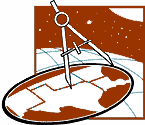|
 |
 |
|

The World Beyond the Classroom
National Science Education Standards,
Program Standard D
Good science programs require access to the world beyond the classroom.
District and school leaders must allocate financial support to provide
opportunities for students to investigate the world outside the classroom. This
may mean budgeting for trips to nearby points of interest, such as a river,
archaeological site, or nature preserve; it could include contracting with local
science centers, museums, zoos, and horticultural centers for visits and
programs. Relationships should be developed with local businesses and industry to
allow students and teachers access to people and the institutions, and students
must be given access to scientists and other professionals in higher education
and the medical establishment to gain access to their expertise and the
laboratory settings in which they work. Communication technology has made it
possible for anyone to access readily people throughout the world. This
communication technology should be easily accessible to students.
Much of this
standard is acknowledged as critical, even if unavailable, for students in
secondary schools. It must be emphasized, however, that this standard applies to
the entire science program and all students in all grades. In addition, this
standard demands quality resources that often are lacking and seem unattainable
in some schools or districts. Missing resources must not be an excuse for not
teaching science. Many teachers and schools "make do" or improvise under
difficult circumstances (e.g., crowded classrooms, time borrowed from other
subjects, and materials purchased with personal funds). A science program based
on the National Science Education Standards is a program constantly moving toward
replacing such improvisation with necessary resources.
The above excerpt is reprinted with permission from the National Science
Education Standards. Copyright 1996 by the National Academy of Sciences.
Courtesy of the National Academy Press, Washington, D. C.
Classroom Compass Back Issues:
Issue 3.1 Contents:
Previous:
Next
|
|
 |
 |